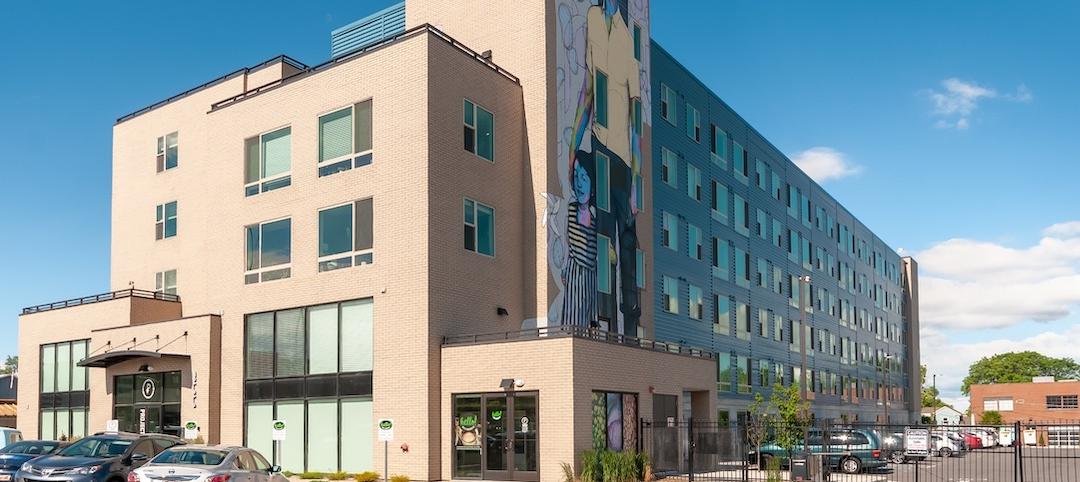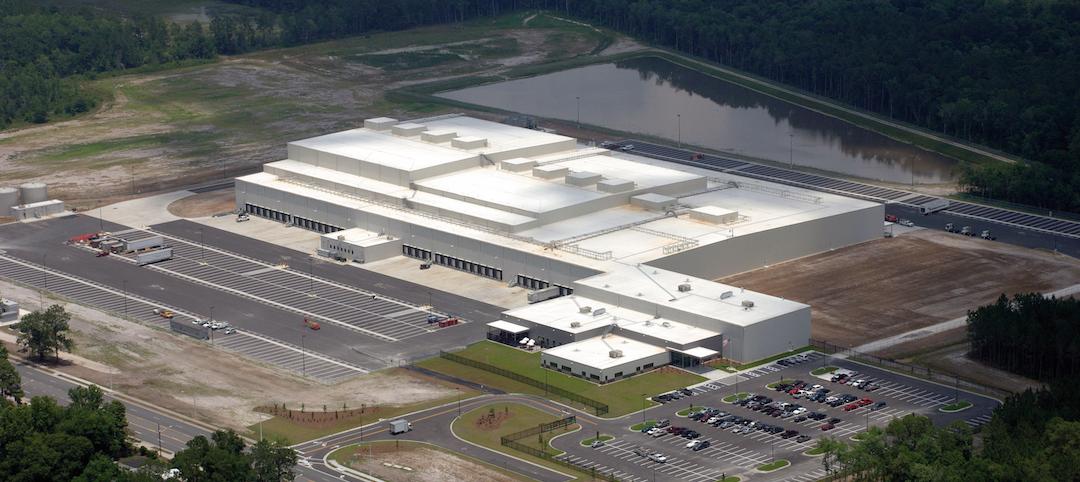Laurence Geller, the blunt-talking British chief executive of Strategic Hotels & Resorts, plans to literally spruce up the facade of the InterContinental Chicago hotel on North Michigan Avenue with a 9,800-sf living green wall.
The wall, which requires City Council approval, would be covered in thousands of plants growing year-round in concealed trays hung perpendicular to the wall. It would be the largest wall of its kind in North America and one of a handful in Chicago, according to Geller and Anne Roberts, the local landscape designer he has hired to build it.
"Unless you start glamoring this thing up, it will never look iconic," Geller said of the two-tower hotel, which Chicago-based Strategic owns. The green wall "will make this North Tower disappear."
Why, I asked, was that tower built with so few windows?
"Because it was built stupidly — cheaply and stupidly some 30-odd-years ago," Geller said. "I don't know what was in anyone's head."
Ald. Brendan Reilly, whose ward includes North Michigan Avenue, said he would introduce an ordinance authorizing the wall and other improvements to the hotel's exterior — awnings, a larger patio to the north, additional lighting — as early as July. The wall will wrap around about 10 of the North Tower's 26 stories and will be lit at night.
"I can't image this will be considered controversial," Reilly said. "Otherwise, it is a pretty unattractive blank wall."
If the council approves the project, Geller expects the frame will be finished this winter and the plants hung by spring. He estimates all of the improvements will cost $2 million to $3 million and hopes the wall will draw more customers.
"We're going to do it because it's right, and we may make a lot of money," he said. "All I need is a quarter-point (more) of market share to get a 20 percent return. And if I don't get it, I don't get it, but at least I'll have made the building better."
Chicago is known for its green roofs but has few green walls, a trend that began in the late 1980s in France. Like green roofs, living walls scrub the air and provide insulation, thereby lowering electricity costs.
But Geller said his water bill likely will increase. Roberts is going to try to water the wall with rain collected on the InterContinental's roof, but she admitted it would not meet all of the garden's needs.
The scarcity of green walls here, experts say, is due to cost and climate. The new Rivers Casino in Des Plaines has a small indoor one, and the Chicago Botanic Garden's new children's garden has four outdoor walls that cover about 670 square feet total.
The far larger project Geller envisions was once thought impossible in Chicago.
"At one time, way back at the beginning of Millennium Park, we considered a Jeff Koons-style puppy made of plants," said Donna La Pietra, the head of Millennium Park Inc., the park's fundraising arm. "The first question we had was, 'Are you sure?' The next was, 'What's going to happen in the winter?' That has always been the thorny question. What kinds of materials can one use? But for almost every challenge that gets raised in the Midwest about plant materials, someone finds a solution. Now we have much more tolerant plants."
Roberts, who has never constructed a green wall, has yet to finalize the hybrids she will use but said evergreens and native plants will be part of the mix. She is working with Rochester, N.Y.-based Green Living Technologies International, which has experience and built the walls at the botanic garden.
Before hanging the plants, Roberts will grow them indoors and slowly rotate them over several months to a 90-degree angle.
"They have to be oriented to that condition before they're put on the wall," she said.
Roberts and her team will control the wall's plastic irrigation system from an off-site computer. When the temperature dips below freezing, the system will be drained. Maintenance will be necessary two to three times per year and done in a similar manner to window-washing. Workers will dangle from the roof to trim and replace plants.
"This is horticulture to the 100th degree," Roberts said. "It's infinitely much harder to figure out what's going to grow on a wall. And this wall will face west, meaning very, very hot in the summer, and is near the lake, meaning high winds."
Geller said the first year will be "trial and error and effort" — "we'll over-irrigate and kill some (plants)," he warned. But if it succeeds, he believes tourists will flock to photograph it and that will propel more business.
"I think Michigan Avenue is old-fashioned in the way its retailing is," said Geller, who praised only the Crate & Barrel store and a Burberry store that is under construction. "Unless architecture meets retailing, retailing will never be successful."
A bolder Michigan Avenue would attract more tourists, and, he added, "I'd make more money." +
Related Stories
Architects | Oct 3, 2019
LEO A DALY wins Architect of the Capitol contract
The firm will help modernize some of the country’s most significant public buildings.
3D Printing | Sep 17, 2019
Additive manufacturing goes mainstream in the industrial sector
More manufacturers now include this production process in their factories.
Multifamily Housing | Sep 12, 2019
Meet the masters of offsite construction
Prescient combines 5D software, clever engineering, and advanced robotics to create prefabricated assemblies for apartment buildings and student housing.
Cultural Facilities | Sep 11, 2019
The Kennedy Center expands for the first time since its 1971 debut
The REACH, with three pavilions on a generous lawn, adds openness and light to this performance space.
Architects | Sep 11, 2019
Buoyed by construction activity, architect compensation continues to see healthy gains
The latest AIA report breaks down its survey data by 44 positions and 28 metros.
Multifamily Housing | Sep 10, 2019
Carbon-neutral apartment building sets the pace for scalable affordable housing
Project Open has no carbon footprint, but the six-story, solar-powered building is already leaving its imprint on Salt Lake City’s multifamily landscape.
Giants 400 | Sep 9, 2019
Top 70 Industrial Sector Architecture Firms for 2019
AECOM, Stantec, Ware Malcomb, FSB, and Macgregor Associates top the rankings of the nation's largest industrial sector architecture and architecture engineering (AE) firms, as reported in Building Design+Construction's 2019 Giants 300 Report.
Giants 400 | Sep 9, 2019
2019 Industrial Sector Giants Report: Managing last mile delivery
This and more industrial building sector trends from Building Design+Construction's 2019 Giants 300 Report.
Codes and Standards | Sep 9, 2019
Free app calculates maximum allowable heights and areas for buildings
A free app that calculates the maximum allowable heights and areas for buildings of various occupancy classifications and types of construction has been released.
Retail Centers | Sep 6, 2019
Another well-known retailer files for bankruptcy: Here's the solution to more empty anchor stores
Where can you find the future of retail? At the intersection of experience and instant gratification.

















